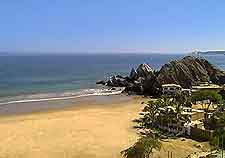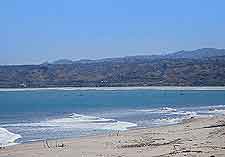Piura History Facts and Timeline
(Piura, Peru)

As is the case with the majority of northern Peru, the region of Piura has a history of habitation by native groups named the Yangas and the Tallanes.
These people lived quite happily with no one to rule over them, that was until the Muchik culture arrived. A more organised way of living was adopted and the mixture of peoples gradually embraced the Vicus culture, being known for their pottery and natural dyes. Several centuries passed and Piura was taken over by Tupac Inca Yupanqui of the Inca Empire. The Inca rule lasted just four decades, until the arrival of the Spanish.
History of the Spanish Arrival
The Spanish landed on the continent permanently in 1532 and infantry colonel Francisco Pizarro González founded what was to be the first Spanish city in all of South America. This settlement was located alongside the Chira River, within the Tangarara Valley, and was soon known as San Miguel de Piura. The actual date of the city's founding is still somewhat open to debate, but during the 450th anniversary festivities, it was decided that 15th July would be considered as the official date.
The present-day Creole and Mestizo cultures now firmly established in Piura were evolved from that period, being strongly influenced by the beliefs of Spanish regions such as Andalucia and Extremadura. Piura also features some noticeable African and Chinese influences, following an influx of slaves from both Madagascar and Canton. Many of the Chinese helped in the rice paddies, while Roma Gypsy pirates also soon made themselves known, coming here to find pearls and other treasures.
In the middle of the 1530s, Morropon (formerly named Monte de los Padres) became the regional capital. Some 40 years later, Paita (formerly named San Francisco de la Buena Esperanza) took over this mantle and all was going well, until pirates made an appearance here. After repeated attacks by English pirates, the location of the capital was changed once again, this time to Piura.

Colonial Legacy
It was here that the Spanish established their first major port in the region to facilitate the shipping home of gold plundered from the Incas. Conquistador Sebastian de Belalcazar seized control of the city from the natives, before promptly moving on to attack fortified Quito to the north.
Thus, Piura is Peru's most ancient colonial city, and over the centuries it has witnessed much change in its overall infrastructure. One of the most significant buildings in Piura's history, the cathedral, was constructed in 1588 and still dominates the Plaza de Armas nowadays.
The Spanish originally gave the city the name Pirhua, which literally translates as 'abundance', although the spelling has since evolved. Nowadays it has also gained the nickname Cuidad del Eterno Calor, which means the 'City of Eternal Heat', due to its constant hot climate.
The Piura of today is a tidy city with an efficient administration that is eager to show off Piura's history to the tourists who come not only for the fascinating museums and old colonial buildings, but also for the great surf beaches of Peru's northern coast.
 As is the case with the majority of northern Peru, the region of Piura has a history of habitation by native groups named the Yangas and the Tallanes.
As is the case with the majority of northern Peru, the region of Piura has a history of habitation by native groups named the Yangas and the Tallanes.